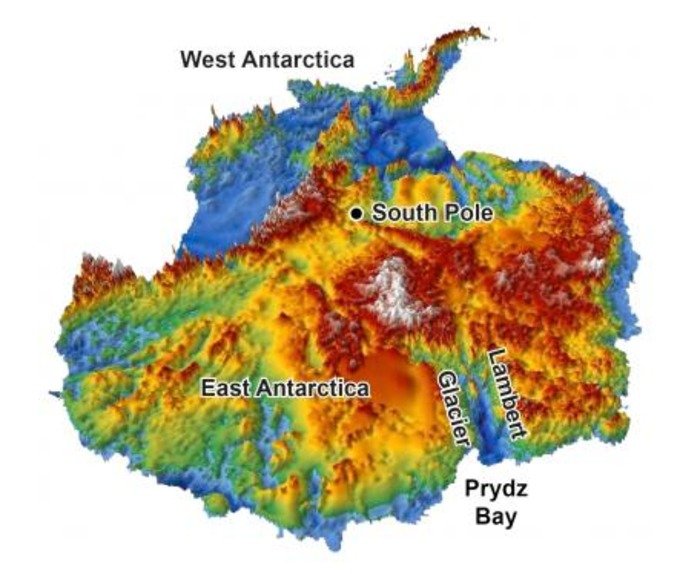This 3-D reconstruction of the topography hidden under Antarctica's two-mile-thick coating of ice was made using data from radar surveys. Credit: Stuart N. Thomson/UA department of geosciences
TUCSON, March 6 (UPI) -- The shape of Antarctica, beneath miles of ice, could yield clues to how the continent's ice sheet affects global climate and sea-level rise, scientists say.
University of Arizona researchers have been studying what caused the topography to start shifting from a flat landscape to one with glaciers, fjords and mountains 34 million years ago.
Radar surveys have revealed a rugged alpine landscape under Antarctica's 2-mile-thick ice sheet, but just when those deep valleys formed has been a question, they said.
"People have speculated when the big fjords formed under the ice," researcher Stuart N. Thomson said. "But no one knows for sure until you sample the rocks or the sediments."
Since the landscape of Antarctica is inaccessible below its thick covering of ice, Thomson and his colleagues had to analyze Antarctica's rocks by examining the sediments that built up off-shore for millions of years as rocks and dirt eroded off the continent.
"We use the sediments to trace what was happening under the ice in the past," Thomson said.
Between 250 and 34 million years ago, the researchers said, erosion was slow, suggesting Antarctica was relatively flat and drained by slow-moving rivers.
About 34 million years ago, as climate shift began to cover the continent in ice, the rate of erosion more than doubled, Thomson said.
"The only way that could happen is from glaciers," he said. "They started grinding and forming deep valleys."
Knowing how the ice sheets changed in the past is important for predicting future changes in ice sheet growth, sea-level change and climate, Thomson said.















